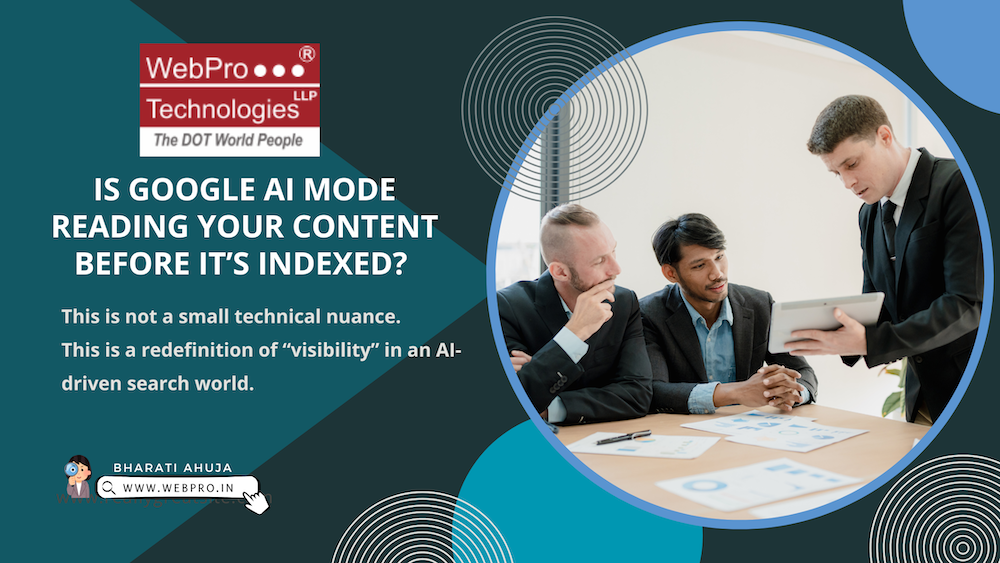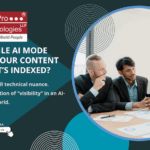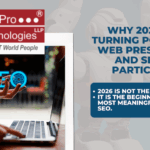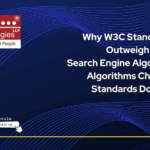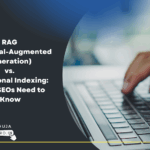For more than two decades, I’ve watched Google evolve — from the simple blue-link SERPs of the early 2000s to the AI-powered ecosystem we’re all navigating today. But a recent observation highlights one of the most significant shifts I’ve seen in how Google consumes and uses content.
Google AI Mode can read, summarize, and use your page content even when it is not indexed.
Yes — even if site:yourURL shows zero results, AI Mode can still fetch your page and generate accurate summaries and answers based on it.
I recently published a new article and noticed exactly this behavior:
- The page did not appear in search results.
- site: showed no indexing.
- But AI Mode could answer questions about the article, summarize it, and extract insights instantly.
This is not a small technical nuance.
This is a redefinition of “visibility” in an AI-driven search world.
Let’s break down what’s happening, why it matters, and how SEOs must adapt.
- AI Overviews Are Not Dependent on Google’s Traditional Index
To understand why this is happening, we need to revisit how Google’s traditional pipeline works:
Crawling → Rendering → Processing → Indexing → Ranking
This process can take anywhere from minutes to days depending on multiple factors.
But AI Mode bypasses this slow, structured pipeline.
What AI Mode appears to be using:
✔ Freshly crawled (but not indexed) content
Google crawls many pages long before they appear in search results.
AI Mode seems to tap into this pre-index content and use it in real time.
✔ Real-time retrieval (on-demand fetching)
Like ChatGPT or Perplexity, AI Mode appears capable of fetching your live page instantly when needed.
This “fetch → read → respond” behavior allows Google’s AI to answer queries about content that is still invisible in Search.
✔ A hybrid content source
From repeated observations and testing, it appears AI Mode uses a mix of:
- Indexed content
- Pre-indexed crawled content
- Real-time fetched content
So when we say Google is moving towards real-time AI search, this is what it looks like in practice.
- Google Search and Google AI Overviews Now Operate as Two Different Systems
For the first time in SEO history, we now have:
Traditional Search = 100% dependent on the index
If it’s not indexed, it simply does not exist.
AI Mode = index + crawl data + real-time retrieval
If it’s crawled or fetchable, AI Mode can use it immediately — even if it’s not indexed, ranked, or visible in SERPs.
This duality is a major turning point.
AI Mode is no longer constrained by the classic indexing bottleneck.
This is how Google can offer “instant answers” even from newly published or barely processed content.
- What This Means for SEOs and Content Publishers
This shift changes several assumptions we’ve held for years.
- “Indexing” is no longer the first point of visibility
Your content can influence AI responses before it influences search rankings.
This means:
- Real-time updates matter
- Fresh content can shape the AI layer immediately
- Even unindexed thought-leadership can reach users via AI summaries
- Authority now depends on “readability by AI,” not just crawlability
AI models don’t rely on the traditional scoring signals alone.
They need:
- clean structure
- clear semantic relationships
- coherent, comprehensive writing
This is why content structure and semantic SEO matter more in 2025 than keyword density ever did.
- AI Mode will reward content freshness in a way classic search never could
In traditional search:
- A new page waits in a queue
- It slowly earns trust
- Rankings take time
But in AI Mode:
- New content can be used instantly
- Freshness can influence AI answers within minutes
- Rapid updates can inform real-time results
This benefits publishers who publish timely insights, news, analysis, commentary, and fast-evolving content.
- The gap between “being read” and “being ranked” is widening
Your content may contribute to AI answers without receiving page-level visibility.
In other words:
You may get AI visibility even when you don’t yet get search visibility.
This shift will change how we measure performance.
- Technical SEO Implications: What You Need to Do Now
- Ensure instant crawlability
If Google can’t fetch your content instantly, AI Mode will not use it.
Fix:
- Robots.txt issues
- Slow hosting
- JavaScript-heavy rendering
- Blocked resources
- Poor internal linking
- Write for LLM comprehension
LLMs prefer:
- Clear headings
- Declarative sentences
- Well-structured sections
- Explicit definitions
- Semantic clarity
This isn’t traditional SEO optimization — it’s AI comprehension optimization.
- Embrace real-time publishing
Fresh insights matter more than ever because:
- AI Mode rewards real-time content
- Traditional Search lags behind
- Monitor AI Mode visibility separately
SEO tools don’t measure this yet.
Develop processes to manually:
- Ask AI Mode questions
- Observe which pages it pulls from
- Note when summaries match your content
- Track AI-driven visibility even without rankings
- The Big Picture: Google Is Transitioning from an Index-Based Search Engine to an AI-Based Retrieval Engine
For twenty years, SEO has been built on a simple premise:
If you want visibility, you must get indexed.
But now, Google is signaling a new paradigm:
If your content exists on the live web and is fetchable, the AI may use it — even before indexing.
This fundamentally changes:
- content strategy
- SEO timelines
- visibility metrics
- how publishers launch content
- how fast you can influence user queries
We are witnessing the early stages of AI-native search — a system powered by LLMs, supported by but not restricted to an index.
This is a turning point just as profound as:
- the introduction of universal search
- the rise of mobile-first indexing
- the advent of semantic search
- the shift toward AI overviews
Except this time, the change affects the very foundation of how search engines see content.
- Final Thoughts: SEOs Must Adapt to a Dual System
As of now, Google operates two parallel search engines:
- The traditional index-based search engine
(blue links, rankings, indexing cycles)
- The real-time AI retrieval engine
(dynamic, predictive, content-aware)
Your content needs to perform well in both worlds.
If you only optimize for indexing, you’re falling behind.
If you only optimize for AI comprehension, you’re missing rankings.
The future of SEO is not one or the other — it is both.
This is an opportunity for SEOs who understand how Google is evolving beneath the surface.
We’re not just optimizing for search anymore.
We’re optimizing for an AI that reads everything, all the time, in real time.
And this may be the biggest shift since search began.
Key Difference Summary
Traditional Search
- Cannot show your page unless it is indexed.
- Rankings depend on signals, authority, E-E-A-T, links, etc.
- Visibility is delayed due to indexing cycles.
Google AI Mode
- Can read and use content before indexing.
- Uses real-time retrieval + LLM comprehension.
- Summaries based on crawl data, fetch data, AND indexed data.
- Visibility can be immediate.
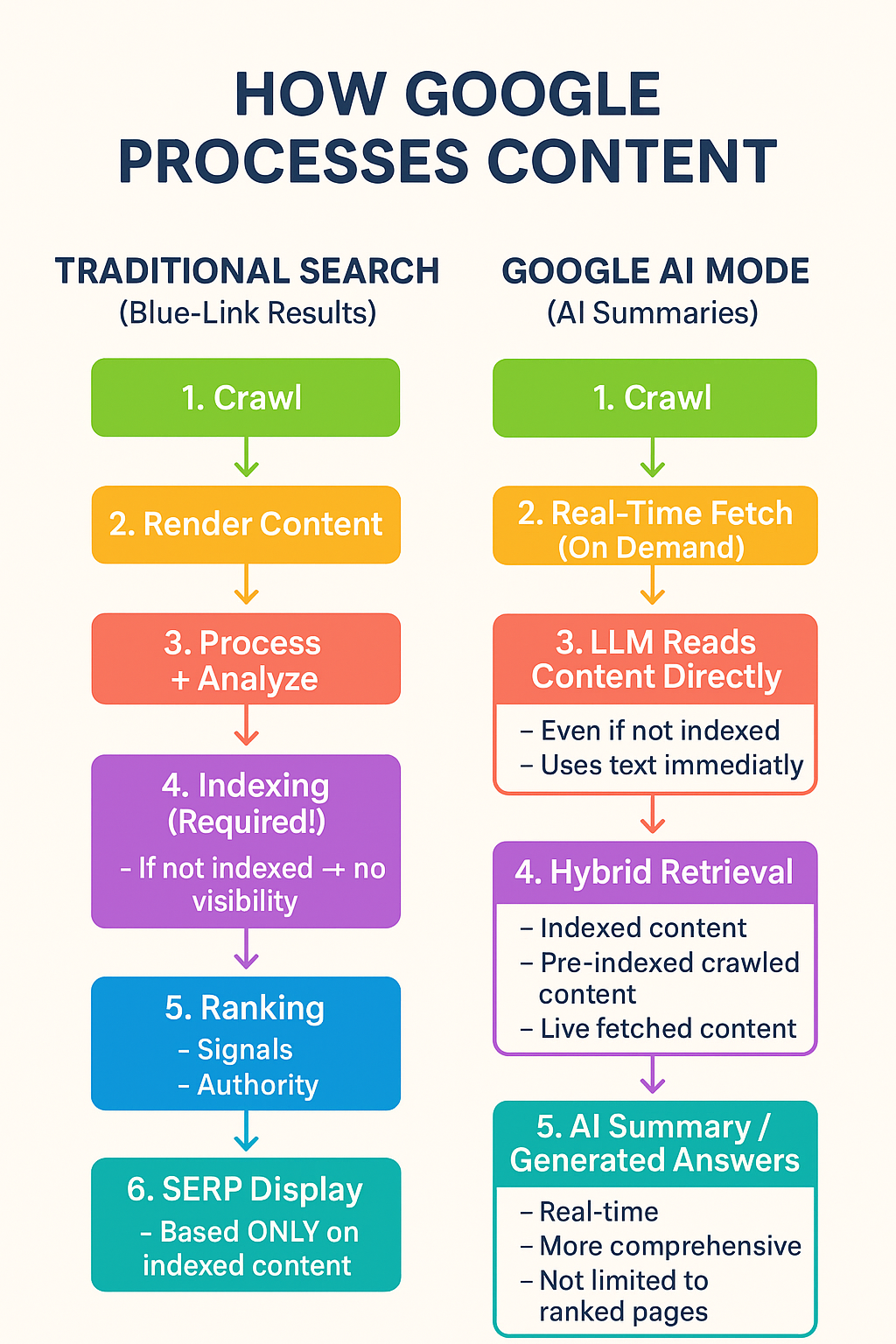
I asked Google AI Search the following question:
Is it true that Google AI Overviews Is Reading website Content Before It’s Indexed — Please explain Why This Matters for SEOs More Than Ever
The Answer Google gave as AI Overview is:
Your observation is insightful and points to a key difference in how Google's AI features operate compared to traditional search. The AI model's ability to summarize newly published, unindexed content suggests its data retrieval process includes accessing the web in a more real-time fashion.
The Role of Real-Time Information
You are correct that Google's AI mode (or AI Overviews) can access real-time information. While a page must still be discoverable by Google's systems to be eligible, the AI features can retrieve content that has been recently published but may not yet be fully integrated into the main, traditional search index.
- Query Fan-Out: The AI mode uses a technique called "query fan-out". This means that when you ask a complex question, the system breaks it down into multiple related sub-queries and runs numerous simultaneous searches across various data sources, including the live web, Knowledge Graph, and shopping data. This process allows it to gather information from a wider and potentially more recent range of sources than the initial results of a classic search query might show.
- Accessing the Web: The AI features are designed to work with Google's existing search systems and retrieve relevant, high-quality information from the index. The content is accessed in real-time for synthesis into a cohesive answer.
- Indexing is Still Key: Google's official guidance states that for content to be eligible to show up in AI Overviews or AI Mode as a supporting link, it must be indexed and eligible to be shown in Google Search with a snippet. However, "indexing" is a process that begins shortly after a page is crawled, and the system can likely access the content of a newly crawled page even if the traditional search algorithm hasn't fully ranked or cached it for a standard web results page (which can sometimes take longer to update).
Comparison with Traditional Search
- Traditional Search: As you noted, the traditional search results page (the "Web" filter) relies heavily on the main, fully processed search index and ranking systems, which might not reflect the immediate freshness of newly crawled content.
- AI Mode: The AI experience is more dynamic and conversational, retrieving information from various sources to synthesize a unique, direct answer to the user's specific query, almost like a chatbot using the web in real-time.
The AI mode's ability to provide summaries of very fresh, seemingly unindexed content demonstrates its capacity to perform real-time data retrieval from the vast, current web information ecosystem, effectively blending instantaneous access with the power of large language models.
Why This Matters for SEOs More Than Ever
The AI's ability to access and synthesize fresh content changes the SEO landscape in several key ways:
- Indexing Becomes the Gateway: The primary objective is no longer solely about achieving a top rank on the first page of traditional results. The immediate goal is ensuring your content is crawlable, discoverable, and indexable by Google's systems so it becomes eligible to be cited in an AI Overview. Content blocked by robots.txt or noindex tags will remain invisible to the AI.
- E-E-A-T is Paramount: The AI systems are trained to prioritize content from sources that demonstrate high levels of Experience, Expertise, Authoritativeness, and Trustworthiness (E-E-A-T). The models are discerning about the credibility of the sources they use, making quality signals more critical than ever before. Building a trustworthy site is essential.
- Emphasis on Structured, "AI-Readable" Content: The AI needs to easily parse your content to extract facts and insights for its summaries. Content that is well-structured and concise is more likely to be used. This means implementing clear formatting:
- Using descriptive headings (H1, H2, etc.) to structure information logically.
- Utilizing bullet points and numbered lists for easy data extraction.
- Providing concise answers to potential user questions (e.g., in dedicated FAQ sections).
- Implementing appropriate schema markup to explicitly define data points for machines.
- Rise of "Zero-Click" Visibility: AI Overviews often provide complete, synthesized answers directly on the search results page, potentially reducing the need for users to click through to your website. This means:
- Visibility becomes a new metric: Being cited in an AI Overview offers significant brand visibility and authority, even without an immediate click.
- Focus shifts to quality clicks: The clicks that do occur from an AI Overview are often of higher quality, as the user is more informed and has a stronger intent after reading the summary.
- Rewarding Freshness and Timeliness: Content that is genuinely new, original, and timely has a higher chance of being picked up quickly by the AI systems. This rewards consistent publishing and updates on breaking news or trending topics.
Ultimately, the core of SEO remains constant: create genuinely helpful, reliable, people-first content. The difference is that you must now optimize that content for immediate machine readability and dynamic retrieval by AI, making foundational SEO practices more crucial and complex than ever before.
Disclaimer: I am stating this on the basis of the actual search performed. Though Google insists that pages which are not yet indexed do not show in AI overviews.
November 24, 2025